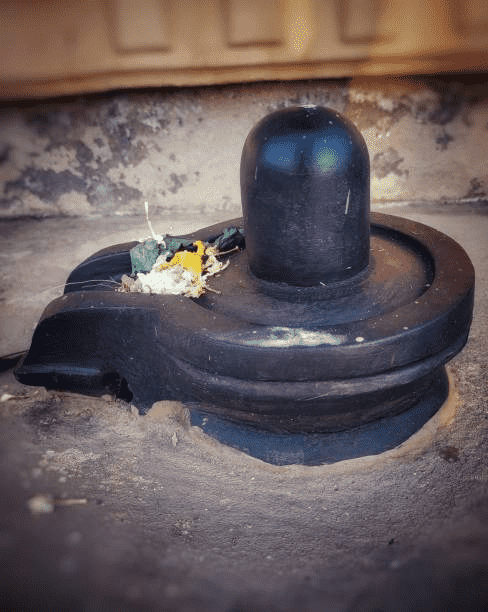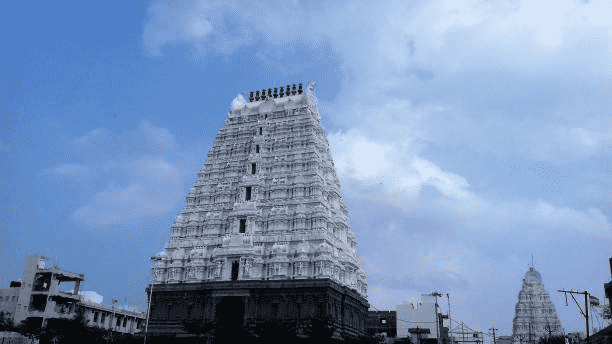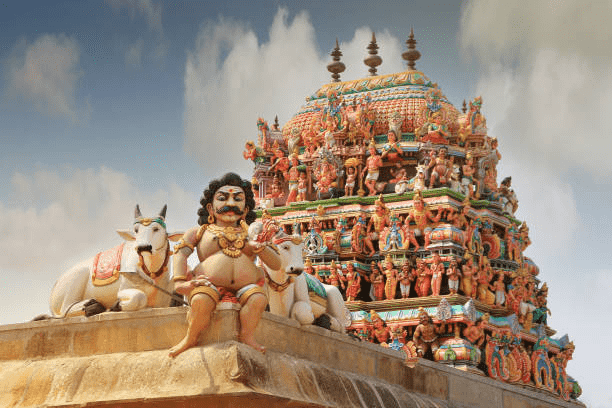The term “Pancha Bhoota Stalam” refers to five Shiva Temples. Each displays one of the five essential elements of Nature, Earth, water, Fire, air, and ether, in which 3 temples are straight.
A collection of physical elements known as the “five great elements” or “five physical elements” is considered by Hinduism to be the cornerstone of all cosmic creation.

These components each have unique qualities that explain the various faculties of human experience—Ayurveda and yoga both associate Pancha Bhuta with a person’s general well-being.
Any illness in the human body is a sign of an unbalance in one or more of these components. These five elements are linked to each of the seven Chakras in the subtle human body.
Introduction to Pancha Bhoota Stalam
There are numerous groups of pilgrimage locations connected to particular Hindu mythology.
There are multiple organizations in India, including the Char Dham, 12 Jyotirlingas, and 51 Shakti Peethas.
Let’s talk about the “PanchaBhootaStalam,” a significant collection of temples. Bhoota denotes elements, and Pancha indicates five.
These Panchbhoota Sthalas are represented by Shiva, the supreme deity composed of the fundamental five components of existence, Earth, water, air, Sky, and Fire. These temples are all found in the southern region of India.
You can find these temples in Tamilnadu (four) and modern-day Andhra Pradesh (one). Each Shiva lingam has a unique name based on the elements it symbolizes, and the five lingams are thought to contain the five elements.
- Earth: The Lord is worshipped at the Kanchi Ekambareswara Temple in Kanchipuram, where the Lord represents the element as Earth (Bhumi Lingam).
- Water: The Lord is worshipped at the Thiruvanaikaval Jambukeshwara Temple in Trichy, where the Lord represents the element of water (Jambu Lingam).
Air: The Lord is worshipped at the Kalahasti Nathar, also known as the Kalahasti Temple, where the Lord represents the element as air or wind(Vayu Lingam).- Sky: The Lord is worshipped at the Chidambaram Temple or Thillai Natarajar, where he represents the element of the Sky(Akasha Lingam).
- Fire: The Lord is worshipped at the Thiruvannamalai Arunachaleswara (Annamalaiyar) Temple in Thiruvanna Malai, where he represents the element of Fire(Agni Lingam).
Location of these Pancha Bhoota Stalam or Pancha Bhoota Shrines
In South India, there are five Pancha Bhoota Stalams: four in Tamil Nadu and one in Andhra Pradesh. Soul Veda examines the myths about the five temples.
- Ekambareswarar—The Earth Lingam- located in Kanchipuram in the state of Tamilnadu
- Jambukeswarar—The Water Lingam- located in Thiruchurapally (Thrichi district) Thiruvanaikkaval
- Arunachaleshwarar Temple—The Fire Lingam- situated in the town of Thiruvannamalai in Tamil Nadu
- Srikalahasti Temple—The Air Lingam(vayu lingam)-located in Andhra Pradesh
- Chidambaram Nataraja Temple – The Sky lingam- is located in the town of Chidambaram in Tamilnadu.
These temples contain history, sculpture, legends, and festival customs. Geographically, each temple is arranged in almost a straight line.
Three of the five temples, Chidambaram Nataraja Temple, Ekambareshwara Temple, and Srikalahasti Temple, are located precisely at 79 degrees and 41 minutes.
Thiruvanaikkaval is situated along this divine axis at a distance of 3 degrees to the south and 1 degree to the west, while Thiruvannamalai is roughly halfway at 1.5 degrees to the West, East in Longitude, and the other two temples.
1. Ekambareswarar Temple-The Earth(Prithvi) Lingam
Location: Kanchipuram,Tamil Nadu, India
Category: Earth (Prithvi sthalam)
Shiva lingam here is known as Prithivi Lingam. Ekambareswarar, a Pancha Bhoota Stalam and one of the oldest shrines in India, is situated in Kanchipuram, Tamil Nadu.
The intricately sculpted gopuram of the Ekambareswarar temple, built by the Cholas and the Pandavas, is its claim to fame.
You may also like Katra to Vaishno Devi temple Distance-2022 updated yatra details

Ekambareswarar Temple attracts millions of pilgrims each year for its fabled earthen Lingam, in addition to being a photographer’s paradise for its stunning architecture.
By a legend, Goddess Parvati once offered Lord Shiva a sacrifice under a mango tree close to Ekambareswarar. To perform her rituals, she built an earthen lingam there.
To monitor her level of devotion, Lord Shiva showered her with a rain of fire. However, Lord Vishnu rescued her.
Another attempt was made to stop her penance, who instructed the Ganges to do so. However, Parvati convinced Ganga to stand guard over her.

In particular, the tree is said to produce four different mango varieties. Ekambra refers to Shiva as the Lord of the Mango Tree because Eka means “one,” and Amra means “Mango.”
2. Jambunath Temple/Tiruvanaikaval – Water / Jala
Location: Thiruvanaikaval, Tamilnadu, India
Category: Water
Lord Siva is the focus of this temple, located two kilometers from Srirangam. Jambukeswaram is another name for it. This is also called The Pancha Bootha Sthalams’ Appu Sthalam.
You may also like The Mysterious Temple in India Rani ki Vav in Gujarat
The Siva Lingam (Appu Lingam) is submerged in underground spring water beneath a sacred Jambu tree. In the shrine, there is another Lingam.
Both Lingams receive daily prayers and worship. While the Lord faces west, there is a separate shrine for the Goddess, Akhilandeswari.
The temple is in the middle of a mango grove, encircled by five walls, and has seven gopurams. Carvings and sculptures represent the Chola era.
A magnificent figure of Ekapadeswarar is depicted in a pillar in the Mahamandapa of the Akhilandeswari temple, with Brahma and Vishnu on either side with their vahanas.
The priest performs the mid-day puja while dressed as a woman, representing that Goddess Parvati is herself praying to the Lord Legend.
At the same time, a spider and an elephant worshipped the Lingam. The spider would create a protective web for the Lord.
The elephant carried water in its trunk when performing the Lord’s Abhishekam. He discovered the web in the path and removed it.

Once more, the spider spun her web, which the elephant destroyed. This continued, and eventually, the enraged spider entered the elephant’s trunk to annoy him.
The elephant brushed up against a rock with his trunk. The spider and the elephant attained moksha because of their steadfast devotion, which pleased the Lord.
The location is called Tiruvaanaikaaval (Aanai in Tamil—Elephant) and is also known as Jambukeswaram because an elephant once worshipped the Lord here.
In the past, a rishi used to perform tapas in this area. The Lord approved of his prayers and consented to appear as Jambukeswarar to devotees here.
3. Arunachaleshwarar /Annamalaiyar Temple—The Fire Lingam
Location: Thiruvannamalai, Tamilnadu, India
Category: Agni
The Tamil Nadu town of Thiruvannamalai is a haven for ascetics and monks on spiritual pilgrimages. The picturesque Arunachala (also known as Annamalai) hill serves as the town of Thiruvannamalai’s backdrop, and it is notable for the Annamalaiyar Temple.
You may also like Jaipur, the pink city of India,Architecturally Rich city of,Rajasthan

The Annamalaiyar temple, one of the earliest in India and constructed by the Cholas, is where Lord Shiva is worshipped as the Agni lingam (Fire Lingam).
According to legend, Parvati once playfully closed Lord Shiva’s eyes in Kailasha (heaven). The Earth included, and the entire universe was instantly enveloped in darkness.
Parvati did penance to undo the effects. Then, Lord Shiva appeared atop the Annamalai hill as a fiery flame, re-illuminating the heavens and the Earth.

Then he combined half of his body with Parvati’s to become Ardhanarishvara, Lord Shiva’s bisexual manifestation.
To maintain this myth, the Karthigai Deepam festival is held yearly, and a sizable lighthouse is lit atop the hill.
4. Sri Kalahasti Temple – Wind (Vayu)
Location: Chittoor District, Andhra Pradesh, India
Category: Wind
Siva’s “Vayulinga” temple, 36 kilometers from Tirupati, is dedicated to him. A snake named Kala placed a gem on top of the Linga, and an elephant named Hasti brought water in its trunk to clean the Linga, according to legend.
You may also like The Mysterious Temple in India, Chaya Someswara Temple in Hyderabad

A spider named Sri spun a web over the Linga. They all had a strong devotion to Siva. As air (Vayu) is rumored to be constantly emanating from the Sivalinga, the flame (deepam) in the temple frequently flickers.
Lord Shiva is worshipped at the Saivite temple in Kalahasti, which is dedicated to Sri Kalahasthisvara and Gnana Prasannambika.
One of the Pancha Bhutha Sthalas is revered at Kalahasti, 38 kilometers south of Tirupati. Here, the Linga is called “Swayambhu” and is considered Vayu in form (wind).
The remaining four Pancha Bhutha Sthalas are Kanchipuram (Earth), Tiruvannamalai (Fire), Tiruvannaikaval (Water), and Chidambaram Nataraja Temple (sky)
Even though there is no air inside the sanctum of this temple, the lamp inside keeps flickering. It is also regarded as a Rahu and Kethu-focused Nava Graha Sthala.
Lord Shiva bestowed his blessings on Rahu and Kethu grahas here. Tirunageswaram and Kizhaperampallam are the other Nava Graha Sthalas specifically dedicated to Rahu and Kethu, respectively.
According to the Puranic account of the temple’s history, the Lord was worshipped here by an elephant named Hasti, a snake named Kala, and a spider named Sri.
The Lingam was given the name Sri Kalahasthiswara as a result. Gnana Prasannambika is his wife. Here, the gods of Viswanath, Annapoorni, and Balaganapathy are worshipped.
An underground cell is patalaganapathy. By the temples, a river called the Swarnamukhi flows. Manufacturers of “Kalamkari,” or clothing and hangings for temples, are well known in Sri Kalahasti.
5. Chidambaram Nataraja Temple/Thillai Nataraja Temple—The formless (ether) Lingam
Location: Tamilnadu
Category: Sky
The Chidambaram Nataraja temple, in Chidambaram, Tamil Nadu, literally translates as “an atmosphere of wisdom.” This 51-acre temple constructed by the Cholas is said to connect formless divinity with creative art forms symbolically.
You may also like Meenakshi temple Madurai – history, architecture – complete details

Lord Vishnu and Mahadeva are both worshipped in this temple, and the shiva linga in this location symbolizes the element sky.
As a result, while Lord Shiva is present in the innermost sanctum sanctorum as Nataraja (the cosmic dancer), the Chidambara Rahasyam, another shrine, is an empty room with a golden roof.
This area exudes spiritual energy as though the shapeless Shiva—who represents ether—is present.
According to a local myth, Lord Shiva (who at the time took the form of a handsome mendicant) once strolled into the Thillai forest where a community of sages lived.
The sages’ wives were mesmerized by his beauty, which naturally displeased their husbands. The sages considered themselves superior because they were adept at rituals and mantras.

So, using magical practices, they summoned serpents to kill the mendicant. However, Lord Shiva, who is more potent, wore them as decorations around his neck.
The sages, even more furious, called upon a tiger. However, Lord Shiva was more powerful than the tiger as well. He wore the tiger’s skin around his waist as a shawl.
The sages finally summoned a strong demon after gathering all their strength. Unbothered, Nataraja performed the Nanda Tandava on top of the demon while Lord Shiva immobilized him.
At that point, the sages realized the true nature of the mendicant and bowed to the Lord’s dominance. Visiting Pancha Bhoota Stalam is an excellent experience for Mankind.
What Constitutes Each of the Five Elements in the Human Body?
You only need to worry about the akasha in these five elements if you want to explore mystical dimensions. Among the other four elements,72% of your body is entirely water.
Earth makes up the remaining 12%. Air makes up the remaining 6% and is the easiest substance to control because it has breath and can be controlled in specific ways. Fire accounts for the remaining 4%.
Because you are householders in family settings, you do not need to control Fire. Doing so could cause you to suffer from a variety of negative effects.
Akasha is the remainder. Unless you’re interested in exploring the mystical realms of existence, you don’t need to worry about that. There are just four things you need to live well. Those who want to live well do not need to consider the fifth one.
Why Are the Five Elements’ or Pancha Bhutas’ Collaboration Needed?
Your life is only possible with the cooperation of these five elements on all levels, starting with the most fundamental.
Bhuta shuddhi is the name of the primary yoga sadhana that enables one to control these five elements or purify the system’s elements to work together.
This human structure resembles a doorway. A door has two functions. If you constantly stop before closed doors, an entry stops you.
For you, a door represents the potential to enter something if doors are opening up for you. There is only one door, and depending on which side of the door you are on, your life is determined in terms of time and space.
The degree to which these five elements collaborate will decide if you perceive this body as a great possibility or a significant barrier.
People begin to believe you are superhuman if you suddenly live your life with such ease once you become aware of how your body’s water, air, Earth, and Fire are functioning.
But the goal here is to understand how superior human is, not to become superhuman. Being human is fantastic if you can only learn to use your humanity and this human mechanism as a possibility rather than a hindrance.
Conclusion
The five temples, Pancha Bhoota Stalam, are regarded as having great significance in South India. Given that the five Hindu temples were built hundreds of years ago, when satellite technology, GPS, and other cutting-edge scientific engineering tools were not yet available, their geographic alignment is astounding.
Though mysterious, the temple’s exact placements are a marvel of engineering, astrology, and geography. So, all these five temples of Pancha Bhoota Stalam are must and should visit temples in south India.
Frequently Asked Questions
What is Pancha Bhootha Stalam
What are the Legends behing the Pancha Bhootha shrines
These holy locations have been revered for centuries or even millennia. These are the myths and beliefs that support the Lord Shiva-focused Pancha Bhoota shrines. Mahadeva refers to Lord Shiva, who is one of the most revered deities in Hinduism. He is the deity in charge of endings and beginnings, as well as transition.
How many Saivite temples are in the name of Pancha Bhoota
Earth, Water, Fire, Air, and Space are the five elements of nature that are governed by Mahadeva. Every one of the five elements is represented by Lord Shiva, who is revered. It follows that the existence of a group of five Saivite temples bearing the name of the five major elements, Pancha Bhoota, is obvious.




















0 Comments